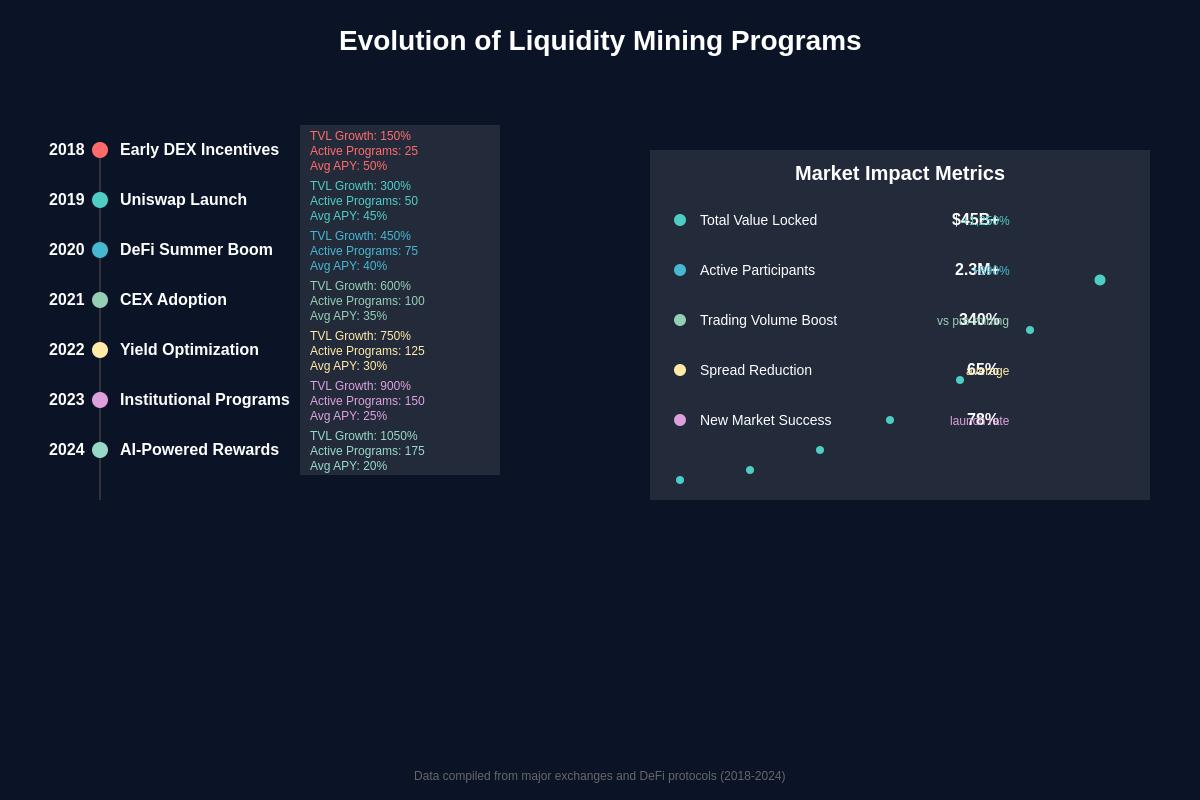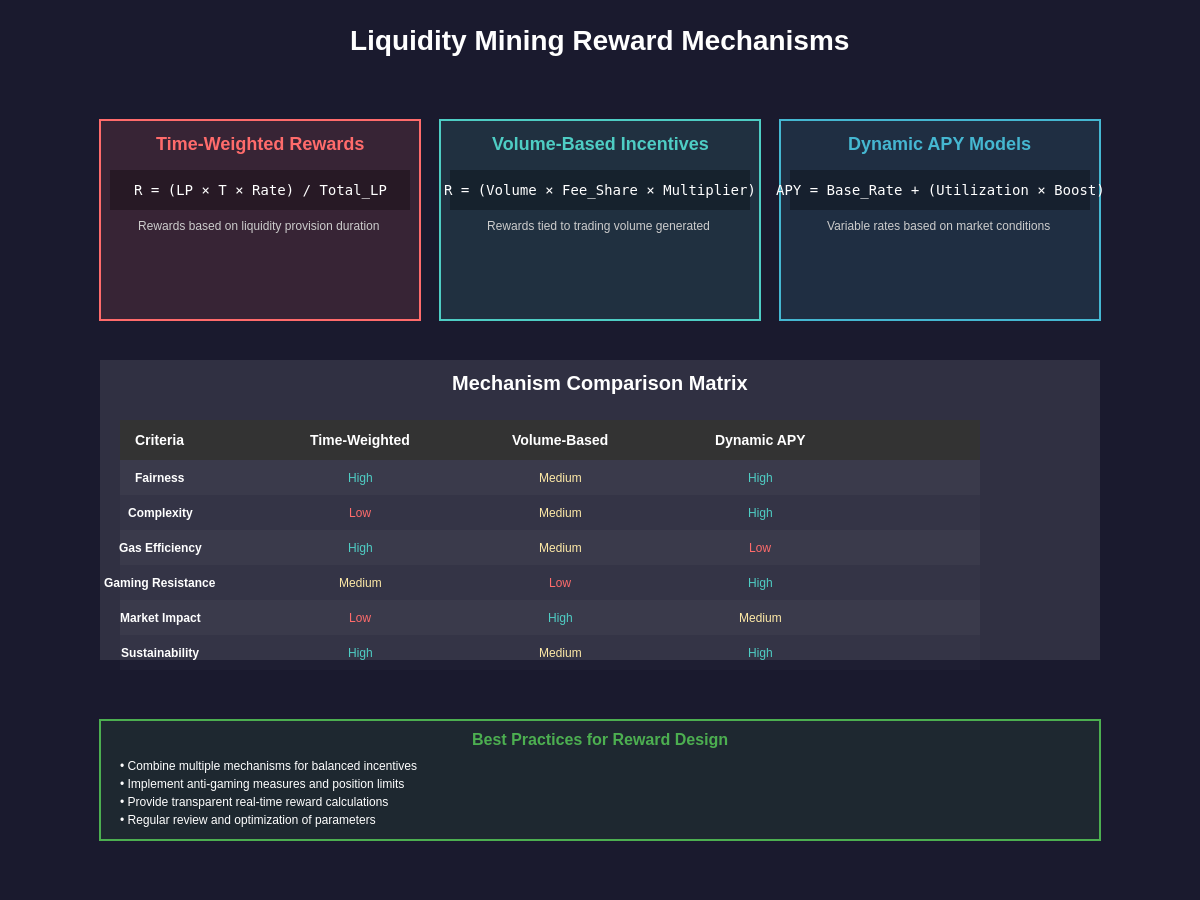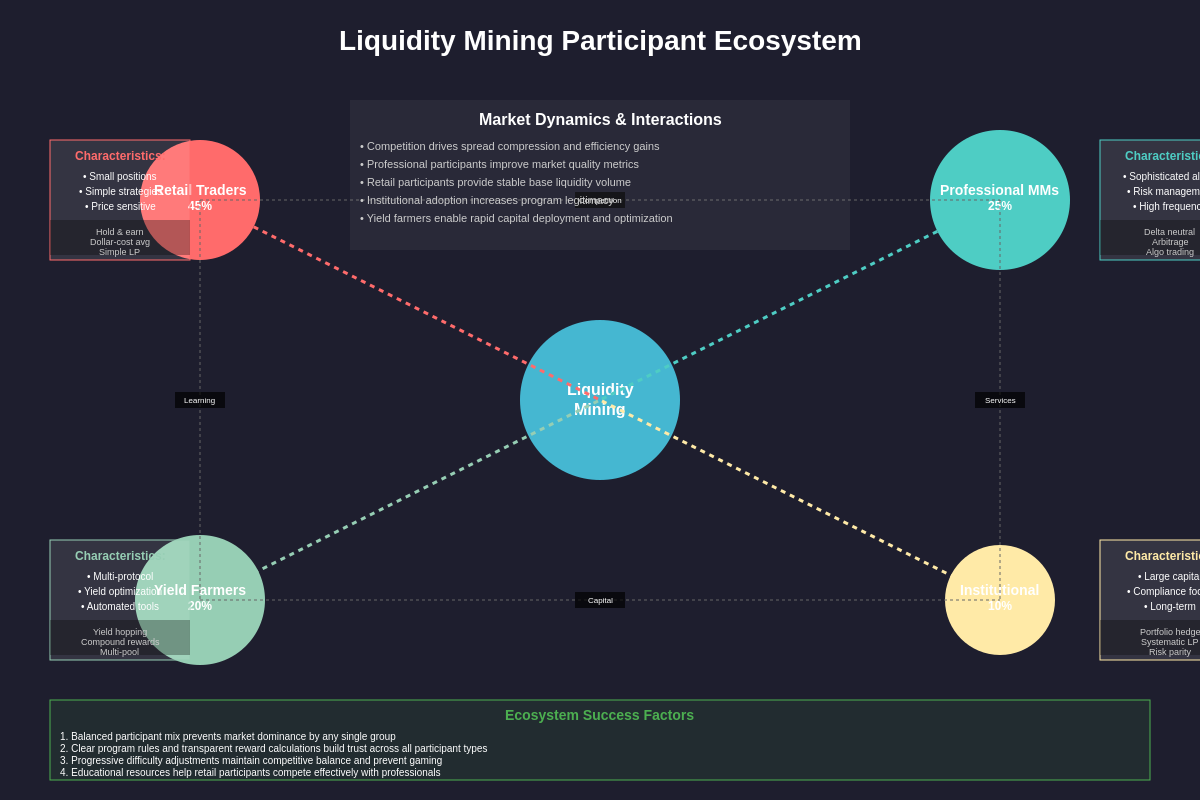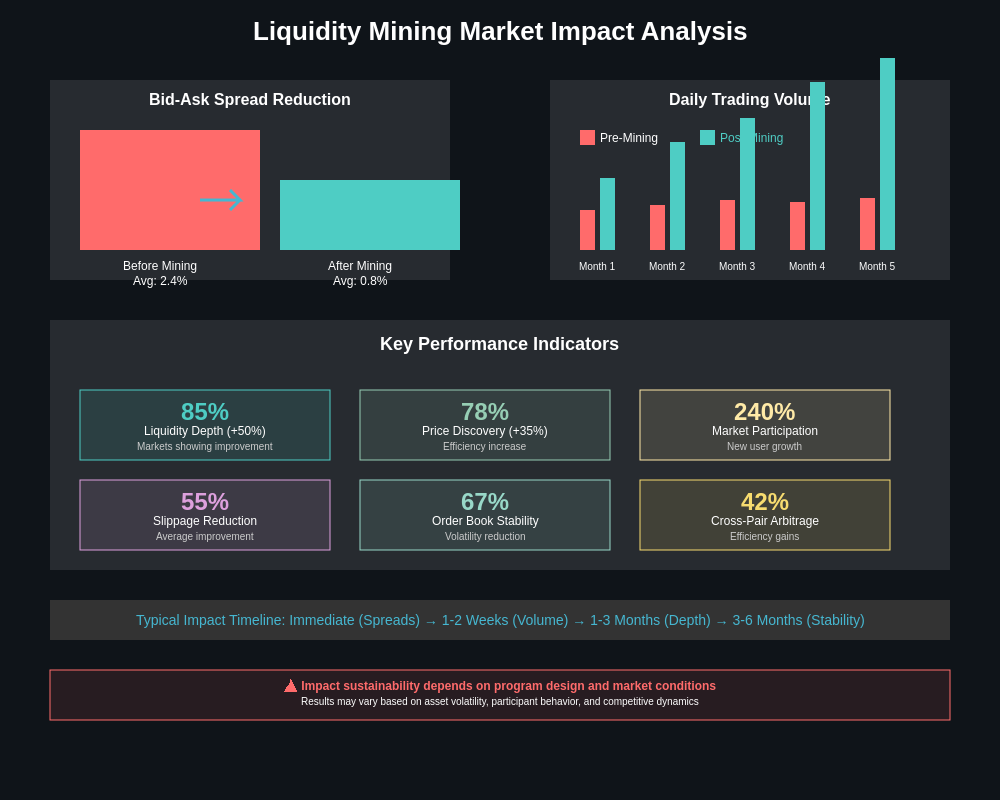The Foundation of Market Making in Digital Asset Trading
Liquidity mining programs have emerged as one of the most revolutionary mechanisms for bootstrapping new cryptocurrency markets, fundamentally transforming how exchanges attract initial trading volume and establish sustainable market depth. These sophisticated incentive structures enable exchanges to overcome the classic chicken-and-egg problem of market creation, where traders need liquidity to execute orders efficiently, but liquidity providers require sufficient trading volume to justify their participation and earn meaningful returns through TradingView’s advanced analytics tools.
The concept of liquidity mining represents a paradigm shift from traditional market-making models, where professional trading firms or designated market makers provided liquidity in exchange for rebates or reduced fees. Instead, these programs democratize market making by enabling any participant to contribute liquidity in exchange for token rewards, creating a more distributed and resilient liquidity ecosystem that can adapt to changing market conditions and user behavior patterns.
Modern liquidity mining programs incorporate sophisticated algorithmic reward distribution mechanisms that optimize for various market metrics including bid-ask spreads, order book depth, trading volume, and price stability. These programs must carefully balance multiple competing objectives including attracting sufficient liquidity to support efficient trading, maintaining fair reward distribution among participants, preventing manipulation and gaming of reward systems, and ensuring long-term sustainability of token economics.

The success of liquidity mining programs depends critically on their ability to create positive feedback loops where initial liquidity attracts traders, which generates volume and fees, which in turn attracts more liquidity providers seeking higher returns. This self-reinforcing cycle requires careful program design and continuous optimization to maintain momentum and prevent the program from stagnating or becoming dominated by sophisticated algorithmic traders who can extract disproportionate rewards.
Historical Evolution and Market Development
The development of liquidity mining programs can be traced back to the early days of decentralized finance, where protocols needed innovative mechanisms to bootstrap liquidity for newly launched trading pairs without relying on traditional market-making infrastructure. Early programs were relatively simple, offering fixed token rewards to liquidity providers based on their proportional share of total liquidity, but these basic models quickly revealed various limitations and opportunities for improvement.
The evolution of these programs has been driven by lessons learned from both successful and failed implementations, with each generation of programs incorporating more sophisticated features including dynamic reward adjustments, multiple token incentives, lock-up periods, and integration with governance mechanisms. The emergence of yield farming during the DeFi summer of 2020 demonstrated the immense potential of these programs to attract capital and bootstrap new markets, while also highlighting the risks of unsustainable token economics and speculative behavior.
Professional exchanges began adopting and refining liquidity mining concepts for centralized trading environments, creating hybrid models that combine the accessibility of decentralized programs with the performance and user experience advantages of centralized infrastructure. These centralized implementations often include additional features such as automated market making integration, risk management tools, and sophisticated analytics that enable more precise optimization of program parameters.
The geographic distribution of liquidity mining programs has also evolved significantly, with different regions developing distinct regulatory approaches and market preferences that influence program design and implementation. Asian markets have generally shown greater enthusiasm for complex tokenomics and gamified reward systems, while Western markets have focused more on regulatory compliance and integration with traditional financial infrastructure.
The maturation of the liquidity mining space has led to the development of specialized infrastructure including automated liquidity management tools, yield optimization platforms, and analytics services that help both exchanges and participants maximize the effectiveness of their liquidity provision strategies. These tools have made liquidity mining more accessible to retail participants while enabling institutional players to deploy capital more efficiently across multiple programs.
Mechanics and Technical Implementation
The technical implementation of liquidity mining programs requires sophisticated smart contract architecture or centralized systems that can accurately track liquidity provision, calculate rewards in real-time, and distribute tokens according to predefined algorithms. These systems must handle various complexities including multiple trading pairs, different types of orders, temporal factors that affect reward calculations, and integration with broader exchange infrastructure.
Reward calculation methodologies vary significantly among different programs, with some using simple time-weighted average formulas while others employ complex algorithms that consider factors such as order proximity to mid-market prices, order size relative to typical market activity, and the participant’s overall contribution to market quality metrics. The most sophisticated programs use TradingView’s market analysis tools to dynamically adjust reward parameters based on real-time market conditions and trading behavior patterns.
Technical challenges in implementing liquidity mining programs include ensuring fair reward distribution among participants with different capital sizes and trading strategies, preventing gaming and manipulation through wash trading or artificial order placement, maintaining system performance under high transaction volumes, and providing transparent and auditable reward calculations that participants can independently verify.
Smart contract implementations must carefully handle edge cases such as network congestion, oracle failures, and emergency situations that might require program suspension or parameter modifications. These systems typically include multiple layers of security including multi-signature controls, time-locked parameter changes, and emergency pause mechanisms that can prevent exploitation while maintaining system integrity.
The integration of liquidity mining programs with existing exchange infrastructure requires careful consideration of data flows, API design, and user interface elements that enable participants to monitor their performance and rewards in real-time. Many successful programs provide comprehensive dashboards and analytics tools that help participants optimize their strategies and understand their contribution to overall market quality.

Economic Models and Tokenomics
The economic sustainability of liquidity mining programs depends fundamentally on the alignment of incentives between exchanges, liquidity providers, and traders, requiring careful design of tokenomics that can maintain program effectiveness over extended periods without creating unsustainable token inflation or rewards that exceed the economic value generated by improved market quality.
Token distribution models vary widely among different programs, with some using native exchange tokens, others creating dedicated liquidity mining tokens, and many implementing hybrid approaches that combine multiple token types with different utility and value accrual mechanisms. The choice of token model significantly affects participant behavior and program sustainability, with native tokens generally providing better long-term alignment but potentially creating more complex economic dynamics.
Reward sustainability represents one of the most critical challenges facing liquidity mining programs, as many early implementations relied on unsustainable token emission rates that created temporary liquidity spikes followed by rapid departures when rewards were reduced. Successful long-term programs have evolved to incorporate revenue sharing mechanisms, where a portion of trading fees generated by improved liquidity is redistributed to liquidity providers, creating more sustainable economic foundations.
The valuation and pricing of liquidity mining rewards presents ongoing challenges, as token prices can be highly volatile and may not accurately reflect the economic value of liquidity provision services. Many participants struggle to assess the true profitability of their participation when rewards are denominated in volatile tokens, leading to suboptimal capital allocation and program performance.
Sophisticated programs have begun implementing dynamic reward adjustment mechanisms that respond to market conditions, participation levels, and program effectiveness metrics, enabling more efficient capital allocation and reducing the risk of overpaying for liquidity during periods of high participation or underpaying during periods when additional liquidity is most needed.
Participant Strategies and Behavior
The participants in liquidity mining programs range from individual retail traders seeking to earn passive income on their cryptocurrency holdings to sophisticated institutional players deploying algorithmic strategies designed to maximize reward extraction while minimizing market risk exposure. Understanding the different participant types and their strategies is crucial for designing effective programs that achieve desired market outcomes.
Retail participants typically employ relatively simple strategies focused on maximizing token rewards without sophisticated risk management or market-making expertise, often leading to suboptimal outcomes when market conditions change rapidly. These participants generally benefit from educational resources and simplified program designs that reduce complexity while still enabling meaningful participation in reward programs.
Professional market makers and algorithmic trading firms bring sophisticated technology and strategies to liquidity mining programs, often dominating reward distribution through their ability to optimize order placement, manage inventory risk, and respond rapidly to changing market conditions. Their participation generally improves overall market quality but can reduce rewards available to retail participants.
The emergence of specialized liquidity mining funds and automated strategies has created new categories of participants who aggregate capital from multiple sources and deploy sophisticated optimization algorithms to maximize returns across multiple programs simultaneously. These participants often have significant impact on program dynamics and can quickly shift capital between programs based on relative reward opportunities.
Behavioral patterns among liquidity mining participants reveal interesting dynamics including herding behavior where participants follow successful strategies, program shopping where capital flows to the highest-yielding opportunities, and strategic timing where participants enter and exit programs based on expected reward changes or market developments.

Risk Management and Security Considerations
Liquidity mining programs face numerous risk categories that must be carefully managed to ensure participant safety and program integrity, including smart contract risks, market risks, regulatory risks, and operational risks that can result in significant losses for participants and exchanges. Comprehensive risk management frameworks are essential for sustainable program operation and participant protection.
Smart contract risks include code vulnerabilities that could allow unauthorized access to funds, logic errors that could result in incorrect reward calculations or distributions, and governance risks where control mechanisms could be compromised or manipulated. Many programs implement extensive auditing procedures, bug bounty programs, and gradual rollout strategies to minimize these risks.
Market risks faced by liquidity mining participants include impermanent loss where the value of provided liquidity changes relative to simply holding the underlying assets, token price volatility that affects the real value of earned rewards, and correlation risks where multiple positions move adversely simultaneously. TradingView’s risk management tools provide essential analytics for participants seeking to understand and manage these exposures.
Regulatory risks continue to evolve as authorities worldwide develop frameworks for cryptocurrency activities, with potential implications for program structure, participant eligibility, and token classification. Many programs implement compliance measures including geographic restrictions, know-your-customer requirements, and regulatory monitoring to reduce legal risks.
Operational risks include exchange security breaches, system downtime that prevents participants from managing their positions, data accuracy issues that affect reward calculations, and customer support challenges that can prevent timely resolution of participant issues. Robust operational procedures and redundant systems are essential for maintaining participant confidence and program effectiveness.
Regulatory Environment and Compliance
The regulatory landscape surrounding liquidity mining programs continues to evolve rapidly as authorities worldwide grapple with the classification and oversight of these novel financial mechanisms, creating uncertainty for both exchanges and participants regarding compliance requirements and legal obligations. Different jurisdictions have taken varying approaches to regulating these programs, ranging from explicit prohibition to detailed regulatory frameworks that provide clarity for compliant operations.
Securities law implications represent one of the most significant regulatory considerations for liquidity mining programs, as token rewards could potentially be classified as securities depending on their structure, distribution mechanism, and participant expectations. Many programs have implemented measures to reduce securities law risks including limiting geographic availability, implementing accredited investor requirements, and structuring rewards to emphasize utility rather than investment returns.
Anti-money laundering and know-your-customer requirements increasingly apply to liquidity mining programs, particularly those operated by regulated exchanges or involving significant token distributions. Compliance with these requirements can create operational complexity and costs while potentially reducing program accessibility for participants who prefer privacy or lack traditional identification documents.
Tax implications for liquidity mining participants vary significantly across jurisdictions and can be highly complex, involving questions about the timing of income recognition, the classification of token rewards, and the treatment of impermanent loss and other position changes. Many participants struggle to accurately calculate their tax obligations, creating potential compliance risks and reducing program attractiveness.
Cross-border regulatory coordination challenges arise when programs involve participants and infrastructure spanning multiple jurisdictions with different regulatory approaches, creating complexity in determining applicable rules and compliance requirements. Many exchanges have responded by implementing geographic restrictions or creating jurisdiction-specific program variants that comply with local requirements.
Technology Infrastructure and Scalability
The technology infrastructure supporting liquidity mining programs must handle complex computational requirements including real-time reward calculations, high-frequency order book updates, participant tracking across multiple trading pairs, and integration with various blockchain networks and trading systems. Scalability challenges become particularly acute as program participation grows and reward calculations become more sophisticated.
Database architecture for liquidity mining programs requires careful optimization to handle high-frequency trading data while providing real-time access to reward calculations and participant analytics. Many implementations use specialized time-series databases and caching layers to achieve the performance requirements necessary for responsive user interfaces and accurate reward distribution.
Smart contract optimization becomes critical for decentralized implementations, where gas costs and transaction throughput limitations can significantly impact program economics and participant experience. Advanced implementations use various optimization techniques including batched operations, layer-two scaling solutions, and hybrid architectures that combine on-chain verification with off-chain computation.
API design for liquidity mining programs must balance functionality with security and performance, providing participants with sufficient data and control while preventing system abuse and maintaining competitive information confidentiality. Many successful programs implement rate limiting, authentication mechanisms, and comprehensive logging to ensure system integrity and participant safety.
Integration challenges arise when connecting liquidity mining programs with existing exchange infrastructure, blockchain networks, analytics systems, and third-party services including price oracles, custody solutions, and compliance tools. These integrations must be robust and reliable while maintaining the flexibility to adapt to changing requirements and technologies.
Market Impact and Effectiveness Analysis
The effectiveness of liquidity mining programs in achieving their intended goals of bootstrapping new markets and improving trading conditions can be measured through various metrics including bid-ask spread reduction, order book depth improvement, trading volume increases, and price discovery efficiency enhancements. Comprehensive analysis of these metrics reveals significant variation in program effectiveness based on design choices and market conditions.
Empirical studies of successful liquidity mining programs demonstrate measurable improvements in market quality metrics, with typical programs achieving spread reductions of 20-60% and depth improvements of 50-200% compared to pre-program baselines. However, these improvements often depend on sustained program operation and can deteriorate rapidly when programs are discontinued or rewards are reduced significantly.
The sustainability of market improvements achieved through liquidity mining programs represents an ongoing area of research and debate, with some studies suggesting that benefits persist after program conclusion while others indicate rapid deterioration once incentives are removed. The durability of improvements appears to depend on factors including market maturity, participant retention, and the development of sustainable fee-based market making during the program period.
Cross-program analysis reveals that program effectiveness varies significantly based on market characteristics including asset volatility, existing liquidity levels, trader sophistication, and competitive dynamics. Programs in highly volatile or illiquid markets often achieve more dramatic improvements but face greater sustainability challenges than those in more mature markets.
Long-term market development outcomes from successful liquidity mining programs include increased institutional participation, improved price discovery mechanisms, reduced market manipulation opportunities, and enhanced market resilience during stress periods. These benefits often extend beyond the immediate program participants to benefit the broader trading ecosystem and market participants.

Future Trends and Innovation
The future evolution of liquidity mining programs will likely incorporate advanced technologies including artificial intelligence for dynamic parameter optimization, layer-two scaling solutions for improved efficiency and reduced costs, and sophisticated risk management tools that provide better protection for participants while maintaining program effectiveness.
Artificial intelligence and machine learning applications in liquidity mining programs could enable real-time optimization of reward parameters based on market conditions, participant behavior analysis for improved program design, predictive modeling for sustainability assessment, and automated detection of manipulation or gaming attempts. These technologies could significantly improve program effectiveness while reducing operational complexity.
Cross-chain and multi-asset liquidity mining programs represent an emerging trend that could provide participants with more diversified exposure and exchanges with more comprehensive liquidity solutions. These programs face technical challenges including cross-chain communication protocols, multi-asset risk management, and complex reward calculation mechanisms that span different blockchain networks.
Integration with traditional financial infrastructure including prime brokerage services, institutional custody solutions, and regulatory reporting systems could expand liquidity mining accessibility to institutional participants while improving compliance and risk management capabilities. This integration could significantly increase program scale and sustainability.
Decentralized autonomous organization governance models for liquidity mining programs could provide more transparent and democratic program management while reducing reliance on centralized decision-making structures. These models face challenges including voter participation, decision-making efficiency, and technical implementation complexity that must be resolved for successful adoption.
Industry Best Practices and Recommendations
Successful liquidity mining programs consistently implement several key best practices including transparent and auditable reward calculation methodologies, comprehensive participant education and support resources, robust risk management and security measures, and regular program evaluation and optimization based on performance metrics and participant feedback.
Program design recommendations based on industry experience include starting with simple reward structures and gradually increasing complexity as participant understanding and program infrastructure mature, implementing multiple safeguards against gaming and manipulation including position limits and behavioral monitoring, providing clear documentation and educational resources that enable informed participant decision-making, and maintaining flexibility to adjust program parameters based on changing market conditions.
Risk management best practices for liquidity mining programs include implementing comprehensive security audits and ongoing monitoring systems, providing participants with clear risk disclosures and educational materials, maintaining adequate reserves and insurance coverage for program operations, and developing contingency plans for various adverse scenarios including market crashes, technical failures, and regulatory changes.
Participant protection measures should include fair and transparent reward distribution mechanisms that prevent dominance by sophisticated players, accessible customer support and dispute resolution procedures, clear terms and conditions that define participant rights and obligations, and regular communication about program status and any changes that might affect participant interests.
Regulatory compliance best practices include engaging with relevant authorities early in program development, implementing robust compliance monitoring and reporting systems, maintaining flexibility to adapt to changing regulatory requirements, and working with legal counsel experienced in cryptocurrency and financial services regulation to ensure ongoing compliance.
Conclusion and Market Outlook
Liquidity mining programs have fundamentally transformed the cryptocurrency trading landscape by providing innovative mechanisms for bootstrapping new markets and improving trading conditions across the entire digital asset ecosystem. These programs have demonstrated remarkable effectiveness in attracting liquidity and enabling the rapid development of trading markets that would otherwise require years to achieve sufficient depth and efficiency for institutional participation.
The continued evolution of liquidity mining programs will likely focus on addressing current limitations including sustainability challenges, regulatory uncertainty, and technical scalability issues while incorporating new technologies and approaches that can enhance program effectiveness and participant protection. The integration of these programs with broader DeFi infrastructure and traditional financial systems could significantly expand their impact and adoption.
Market participants considering involvement in liquidity mining programs should carefully evaluate program design, sustainability metrics, risk factors, and alignment with their investment objectives and risk tolerance. The complexity and rapidly evolving nature of these programs require ongoing education and monitoring to ensure optimal outcomes and risk management.
The long-term success of liquidity mining programs will depend on their ability to create sustainable economic value for all participants while adapting to changing market conditions, regulatory requirements, and technological capabilities. Programs that successfully balance these competing demands will likely play increasingly important roles in the development and operation of cryptocurrency markets.
As the cryptocurrency industry continues to mature and gain institutional adoption, liquidity mining programs will likely become more sophisticated and integrated with traditional financial infrastructure while maintaining their innovative approach to market development and participant incentivization. The lessons learned from current programs will inform the design of future implementations that can achieve even greater effectiveness and sustainability in supporting cryptocurrency market development.
TradingView’s comprehensive market analysis tools continue to provide essential infrastructure for monitoring and optimizing liquidity mining program performance, enabling participants to make informed decisions and program operators to achieve their market development objectives.
Disclaimer: This article is for informational purposes only and does not constitute financial advice. Cryptocurrency trading and liquidity mining involve significant risks including potential loss of capital. Past performance does not guarantee future results. Readers should conduct their own research and consult with qualified financial advisors before making investment decisions. The regulatory status of cryptocurrency activities varies by jurisdiction and may change over time. Participants in liquidity mining programs should carefully review all terms and conditions and understand the associated risks before participating.